Table of Contents
Tired of spending hours shuffling between machines at the gym, hitting one muscle group at a time? Or maybe you're looking for a way to build serious strength and power without needing a room full of equipment? If your current routine feels stale or just isn't delivering the punch you expected, it might be time for a change.
Why a Full Body Kettlebell Workout Delivers Real Results
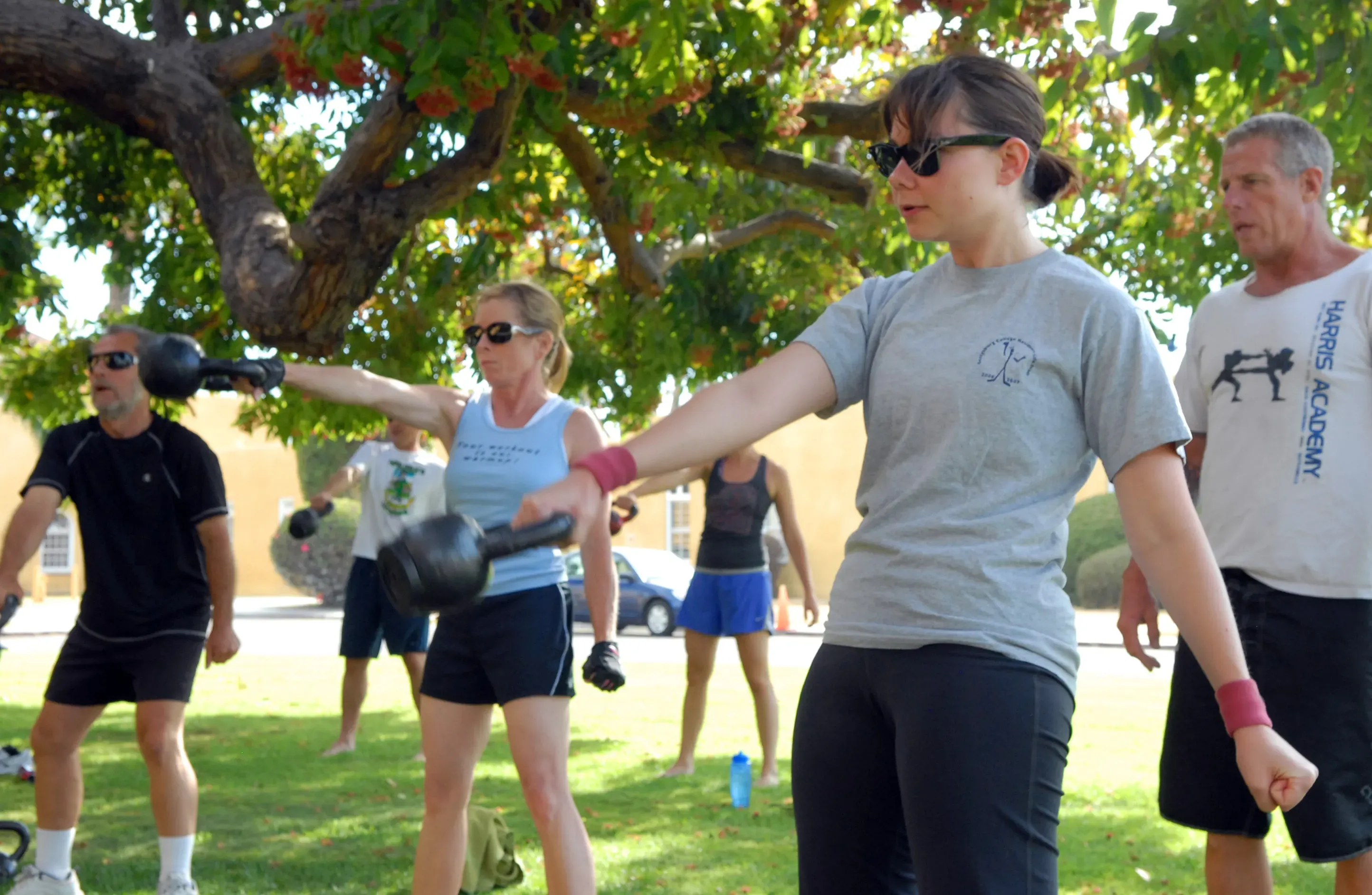
Why a Full Body Kettlebell Workout Delivers Real Results
Look, if you've been slogging through isolated bicep curls and leg extensions, hoping for some kind of transformation, you're probably feeling a bit underwhelmed. Machines have their place, sure, but they often train muscles in isolation, which isn't how your body actually moves in the real world. That’s where a solid full body kettlebell workout kicks things into high gear. These aren't just weights; they're tools designed for dynamic, compound movements. Swings, cleans, snatches – they force multiple muscle groups to work together, building integrated strength, coordination, and explosive power simultaneously. You're not just getting stronger; you're becoming a more capable human machine. It’s about getting more bang for your buck in less time, hitting everything from your grip and core to your legs, hips, back, and shoulders in one brutal, beautiful session.
Picking the Right Tool for Your Full Body Kettlebell Session
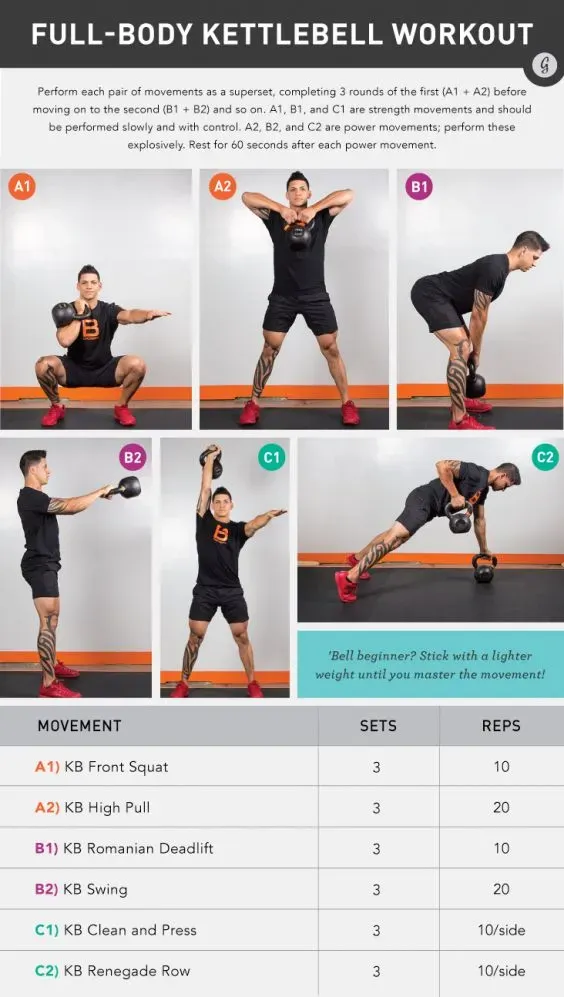
Picking the Right Tool for Your Full Body Kettlebell Session
Alright, so you're sold on the idea of a full body kettlebell workout. Fantastic. But you can't just grab any old kettlebell off the rack and expect magic. Choosing the right weight is absolutely critical. Too heavy, and you'll be sacrificing form, risking injury, and probably just flailing around like a startled octopus. Too light, and you won't challenge your muscles enough to see real progress. For beginners, especially when learning dynamic moves like the swing, starting lighter is always the smarter play. You need to master the movement pattern first, feel how the weight moves through space, and build that foundational stability before you even think about going heavy. Think of it like learning to drive a stick shift – you don't start in a race car.
So, where do you even begin?
- Beginner Men: Start with 16kg (around 35 lbs).
- Beginner Women: Start with 8kg (around 18 lbs).
- Intermediate Men: 20kg or 24kg (44-53 lbs).
- Intermediate Women: 12kg or 16kg (26-35 lbs).
- Advanced Lifters: You probably know your numbers, but don't be afraid to drop down for high-rep work or learning new techniques.
Essential Exercises for Your Full Body Kettlebell Workout
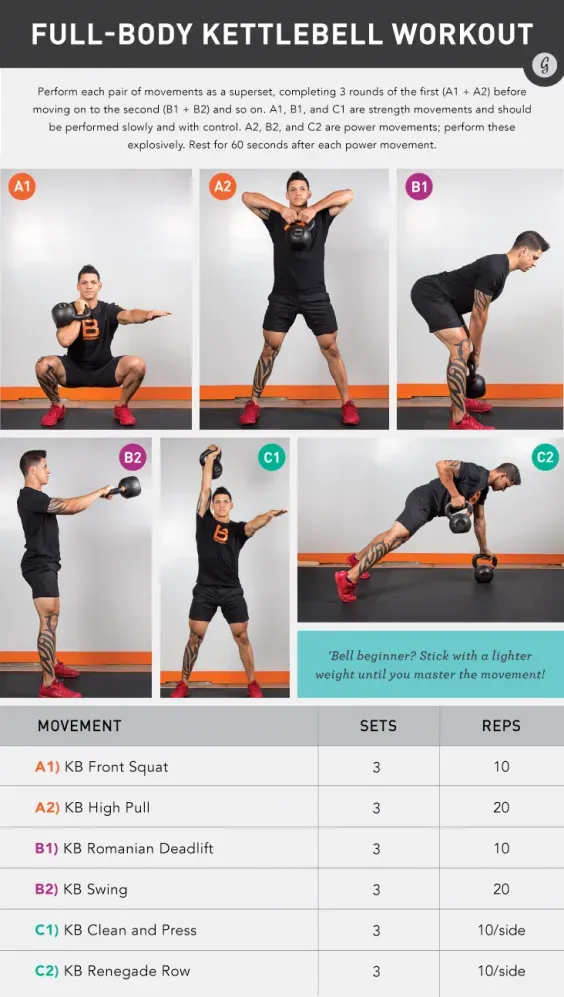
Essential Exercises for Your Full Body Kettlebell Workout
The Kettlebell Swing: The Engine of Your Workout
Alright, let's talk about the swing. If you do nothing else with a kettlebell, learn this. The kettlebell swing isn't a squat with a front raise; it's a dynamic hip hinge. Think about snapping your hips forward like you're trying to throw the kettlebell through the wall in front of you, not just lifting it with your arms. This move hammers your posterior chain – hamstrings, glutes, lower back – which are often weak links. It builds explosive power, improves grip strength, and gets your heart rate absolutely soaring. It's the cornerstone of a good full body kettlebell workout because it teaches you how to generate force from your hips, a fundamental athletic movement. Get this right, and everything else gets easier.
The Goblet Squat: Your Lower Body Foundation
Next up, the goblet squat. This is arguably the most accessible kettlebell exercise for building lower body strength and improving squat mechanics. Holding the kettlebell close to your chest helps keep your torso upright, allowing you to squat deeper with better form than you might with a barbell. It works your quads, glutes, and core like crazy. It’s simple, effective, and a non-negotiable for anyone serious about lower body strength and mobility within their full body kettlebell workout.
Speaking of foundational moves, here are a couple more you'll definitely want in your arsenal:
- Kettlebell Romanian Deadlift (RDL): Excellent for isolating the hamstrings and glutes with a hinge pattern.
- Kettlebell Overhead Press: Builds shoulder strength and stability.
- Kettlebell Row: Crucial for upper back strength and balancing out all that pressing.
The Clean and Press: The Ultimate Full Body Grinder
Ready for something that ties it all together? The clean and press is a beast. It starts with a dynamic pull (the clean) that brings the kettlebell to your shoulder, followed immediately by pressing it overhead. This single movement requires coordination, power, and strength from your legs, hips, core, back, shoulders, and arms. It's a true test of full-body control and power transfer. Mastering the clean takes practice – it's not just curling the weight up. You need to use your hips to drive the bell up and "catch" it smoothly at your shoulder. Once you have the clean, the press is pure brute strength and stability. It’s demanding, but few exercises give you more bang for your buck in afull body workout with kettlebell.
Crafting Your Ultimate Full Body Kettlebell Routine
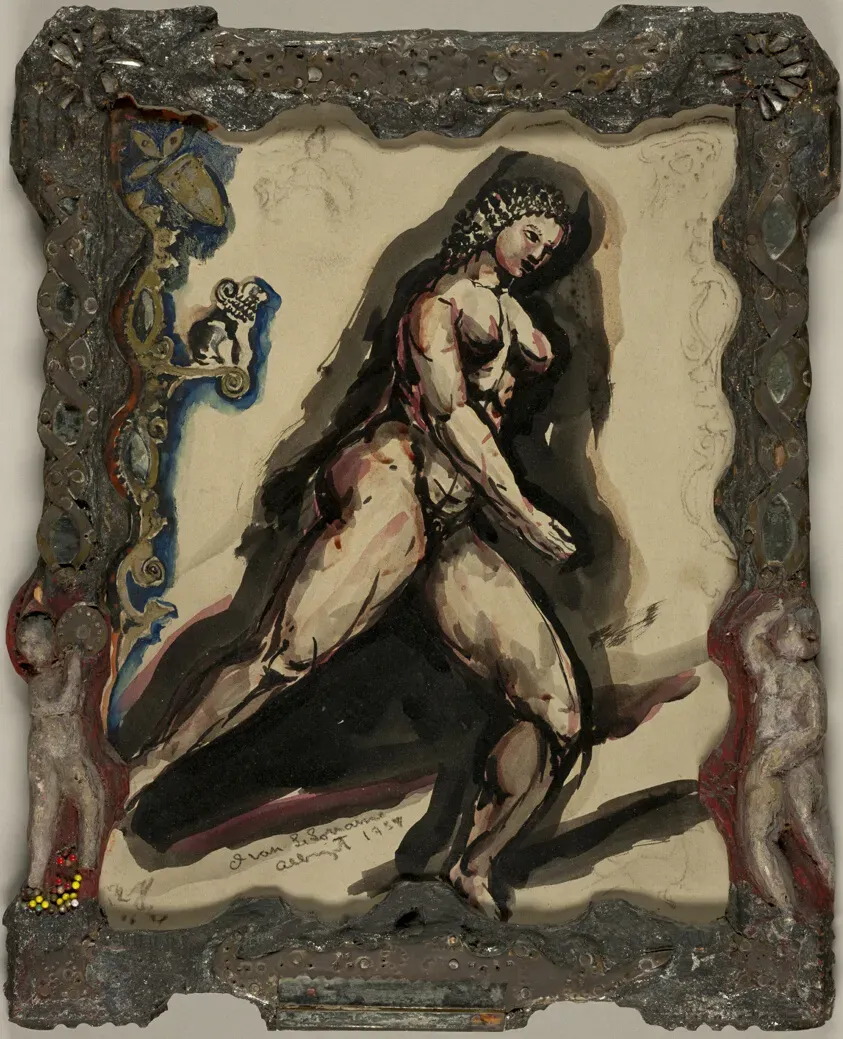
Crafting Your Ultimate Full Body Kettlebell Routine
Pairing Moves for Maximum Impact
you've got the foundational moves down – the swing, the squat, maybe you're dabbling with the clean and press. Now, how do you stitch them together into a killerfull body kettlebell routine? The secret sauce often lies in pairing exercises strategically. Think about hitting opposing muscle groups or combining a strength movement with a more explosive, power-focused one. This approach keeps your heart rate up, works different energy systems, and is way more efficient than doing three sets of one thing before moving to the next. For example, you might pair a heavy goblet squat (strength) with a set of explosive swings (power). Or a clean and press (strength/power) with a set of renegade rows (core/back stability). It’s about creating dynamic duos that challenge your body in complementary ways, getting you more results in less time.
Finding Your Reps, Sets, and Rhythm
So, how many swings should you do? How many sets of squats? There's no single magic number, but here’s a general framework to get you started. For power movements like swings and snatches, focus on quality and explosiveness. Think sets of 10-20 reps. For strength movements like squats, presses, and rows, aiming for sets of 5-10 reps with a heavier weight is usually the goal. You can structure yourfull body workout with kettlebellin a few ways:
- Circuits: Go through a series of exercises (e.g., 4-6) back-to-back with minimal rest between moves, resting only after completing the full circuit. Repeat for 3-5 rounds. This is great for conditioning.
- Paired Sets: Do a set of exercise A, rest briefly, do a set of exercise B, rest, then repeat the pair. This allows for slightly more recovery between specific movements.
- Ladders: Pick two exercises. Do 1 rep of each, then 2 reps, then 3, and so on, until you reach a predetermined number. Or go down the ladder. Brutal and effective.
Listen to Your Body and Progress Smartly
Look, consistency trumps intensity every single time, especially when you're building afull body kettlebell routine. Don't feel like you need to crush yourself into oblivion every session. Start with 2-3 full body workouts per week, allowing at least a day of rest in between. This gives your muscles time to recover and adapt. Progression isn't just about adding weight, though that's part of it. It can also mean doing more reps with the same weight, doing the same reps in less time, increasing the number of sets or rounds, or moving to more complex variations of exercises. Are you getting stronger? Are you moving better? Pay attention to those signals. If something feels off, back off. Pushing through sharp pain is dumb, not dedicated. The goal is sustainable progress, not a one-way ticket to Injuryville. How do you know if you're ready to go up in weight? When the last few reps of your target range feel relatively easy and you can maintain solid form.
Beyond the Basics: Perfecting Your Full Body Kettlebell Form
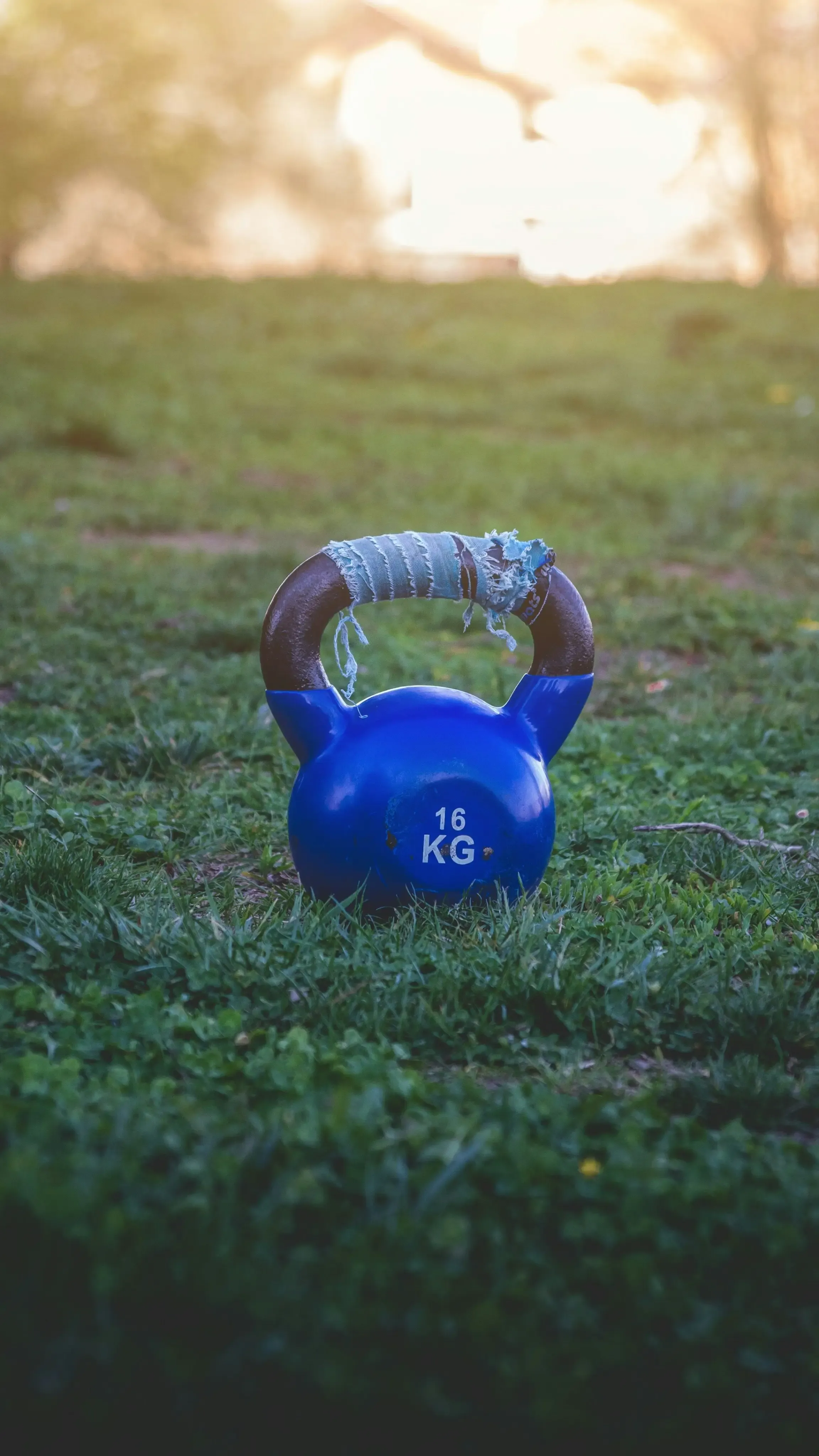
Beyond the Basics: Perfecting Your Full Body Kettlebell Form
Stop Winging It: Why Form Trumps Everything
You've got the swing down (mostly), the squat feels okay, and you're attempting the clean and press without knocking out a tooth. Good. But just "doing" the movements isn't enough if you want real, sustainable progress from your full body kettlebell workout. Sloppy form is a fast track to plateaus and, worse, injuries. Think about it: are you actually using your hips in that swing, or are your arms doing all the work? Is your back rounding during RDLs? Are your shoulders shrugging up to your ears during presses? These might seem like minor details, but they make a monumental difference. Ignoring them means you're not targeting the right muscles effectively, you're putting unnecessary strain on joints, and you're leaving power on the table. It's like trying to build a house on a shaky foundation.
Drills, Cues, and Getting Ruthless with Yourself
So, how do you clean up your act? First, record yourself. Seriously. Set up your phone and film a few reps of your key exercises. What you *think* you look like and what you *actually* look like are often two different things. Pay attention to common faults: rounded back, squatting the swing, using arms instead of hips. Second, use specific cues. For swings, think "hike the bell like a football," "snap the hips," and "stand tall." For squats, "chest up," "knees out," and "sit between your heels." For presses, "pack the shoulder" and "punch the ceiling." Third, swallow your pride and drop the weight to practice perfect reps. Five perfect reps are infinitely better than fifteen ugly ones. Find a qualified coach for even just one or two sessions; they can spot things you'll never see and give you personalized feedback that will accelerate your progress faster than grinding away on your own.
Ask yourself this: "Am I moving the weight, or is the weight moving me?"
Swing Your Way to Real Strength
So there you have it. Afull body workout with kettlebellisn't just another fitness fad; it's a brutal, effective path to building genuine strength, explosive power, and resilience. We've walked through the why, the how, and the specific moves that deliver. It requires focus, dedication, and a willingness to embrace the grind. Forget endless isolation work and shiny machines; the kettlebell demands total body engagement and rewards you with functional fitness that translates to everything you do outside the gym. Pick up that iron cannonball, nail the form, and get to work. The results aren't guaranteed by wishing, but they are earned with every swing, squat, and press.